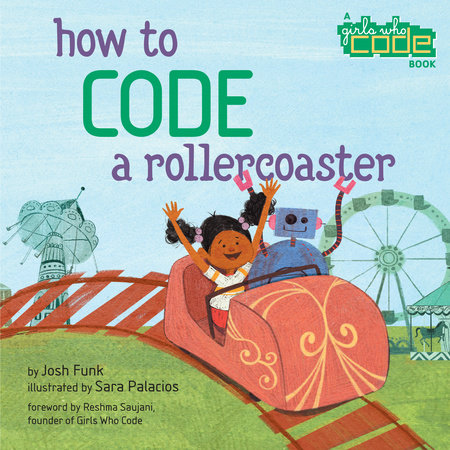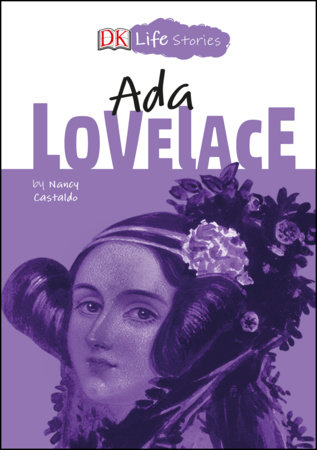10 Books About Coding To Inspire Girls To Lead the Next Tech Revolution
by Laura Lambert
The first computer programmer was a woman: Ada Lovelace. And while women only make up about 26% of the computing workforce, as of 2016, that number is poised to rise.
Girls code — and that’s not changing any time soon. The point of organizations like Girls Who Code and Code.org is to get more girls (and more different kinds of people, overall) into the fold, so that a new, more diverse generation of coders can shape the digital world that lies ahead for all of us.
Here are 10 books to inspire future Ada Lovelaces in our midst.
-
How to Code a Rollercoaster
Buy from:Pearl and Pascal are back in this follow-up picture book to How to Code a Sandcastle. This time they head to the amusement park for a day of fun, but when they get there, the line for Pearl's favorite ride, the Python Coaster, is too long! Using basic coding concepts like Variables, Loops, and Sequence, they map out their day while waiting for the line to shorten.
(Ages 4 - 8)Buy from: -
Margaret and the Moon
Buy from:Let your dreams take you out of this world! This inspiring picture book teaches kids about Margaret Hamilton. As a young girl, Margaret loved numbers and math. Her curiosity and hard work took her first to MIT and then to NASA, where her code was instrumental in putting a man on the moon. In fact, the Apollo 8, Apollo 9, Apollo 10, and Apollo 11 missions wouldn’t have been possible without the code that Margaret wrote!
(Ages 4 - 8)Buy from: -
7 Days till Ice Cream: A Makers Story About Coding
Buy from:Jerron, A.J., and Cha are so excited for ice cream day! But sometimes, the ice cream truck drives down a different street. Can they work together to crack the ice cream man’s code and direct his truck right to their house? This fun, easy-to-read story also focuses on problem-solving and hands-on activities that your children will love!
(Ages 5 - 8)Buy from: -
Lucy Lopez: Coding Star
Buy from:Third-grader Lucy Lopez looks up to her big sister Elena, so when Elena starts spending all of her after-school time coding on the computer, Lucy feels left out. She decides to join the after-school coding camp in the hopes that this will become something she and Elena can do together. But when Lucy turns out to be a natural coder, will Elena be able to come to terms with their shared hobby?
(Ages 7 - 10)Buy from: -
Lauren Ipsum: A Story About Computer Science and Other Improbable Things
Buy from:From a former Facebook engineer, Lauren Ipsum has been described as an Alice in Wonderland introduction to the world of computer science.The main character, Lauren, gets lost in “Userland” and must use computer science-style reasoning and logic to find her way home. While the story itself is fantastical, there’s a section, called “The Field Guide to Userland” where the concepts are presented realistically. Says Sheryl Sandberg, it “captures the spirit of problem-solving and ignites readers’ imaginations.”
(Ages 7 - 10)Buy from: -
The Friendship Code #1
Buy from:Part of the larger Girls Who Code series, The Friendship Code is the first of 13 books slated to tell great stories about girls, computer science, and coding. In this book — which has been likened to The Baby-Sitters Club, but for the computing set — a girl named Lucy learns the ins and out of friendship as well as coding, all in an after school coding club.
(Ages 8 - 12)Buy from: -

DK Life Stories: Ada Lovelace
Buy from:Ada Lovelace coded the first computer in the 1840s, and this biography for middle grade readers delves into her fascinating life, including coding and beyond. Lovelace enjoyed both languages and mathematics — a match made in heaven for coding, it turns out — and was also the daughter of famous poet Lord Byron. Joining the revolution of girls who code is all the more poignant when you know the history behind the movement.
(Ages 8 - 12)Buy from: -
Girls Who Code: Learn to Code and Change the World
Buy from:Girls Who Code is a book, yes, but it’s also a movement — and that movement, now 40,000 strong, is synonymous with its founder, Reshma Saujani, who is the de facto voice in favor of closing the gender gap in coding. The book features friendly illustrations and an extremely approachable, empowering tone that gives girls the basics of programming as well as the tools and confidence to think of themselves as coders.
(Ages 10+)Buy from: -
Zenobia July
Buy from:A mystery novel starring a girl with serious coding skills, Zenobia July will show readers what being a coder can look like in real life. Zenobia is starting at a new middle school, where she’s also presenting her true gender for the first time. While she finds community with other tech-minded friends, a bully takes to the school’s website with hateful messages. However, Zenobia knows she has the skill set to find the bully and help her school stay a safe, inclusive space.
(Ages 10+)Buy from: -

Code Like a Girl
Buy from:Miriam Peskowitz opens Code Like a Girl with an inspiring message: technology and coding, she says, are about “solving problems, being curious, giggling with glee, building things, making the world a better place, and creating the future.” In this approachable guidebook, she helps readers do just that, starting with beginner concepts and moving into engaging projects — from making light-up bracelets to building their own computer.
(Ages 10+)Buy from:
The spirit of problem-solving is at the core of coding — and some of the best literature. So it’s no surprise that this sub-genre is off and running. “I have seen girls tackle every single big problem from cancer to lead poisoning to climate change to homelessness to bullying in schools,” Saujani told CNN, “There is literally no problem that we can’t solve.”
Editor’s Note: This article was originally published in 2017 and updated in 2022.










